Did you recently remove a décor from your wall that left the remains of Gorilla tape, and you want to know if there’s a way to remove the tape residue from your wall? You’ve come to the right place, for we have researched this question, and we have the answer for you.
The first step to removing Gorilla mounting tape is to remove the mounted object before attempting to remove the tape. You might use a hairdryer or heat gun to soften the adhesion and loosen the tape. Then, starting with one corner of the tape, pull slowly to stretch it parallel to the surface of the wall.
Finally, remove the remaining residue by blotting with the tape's own backing or applying:
- mineral spirits
- citrus cleaner
- rubbing alcohol
- car wax remover
Let’s talk more about how to remove other types of Gorilla tape from surfaces in the sections below. Learn about how to best remove the residues of a Gorilla mounting tape and minimize any possible damage to the surface.
Read on!
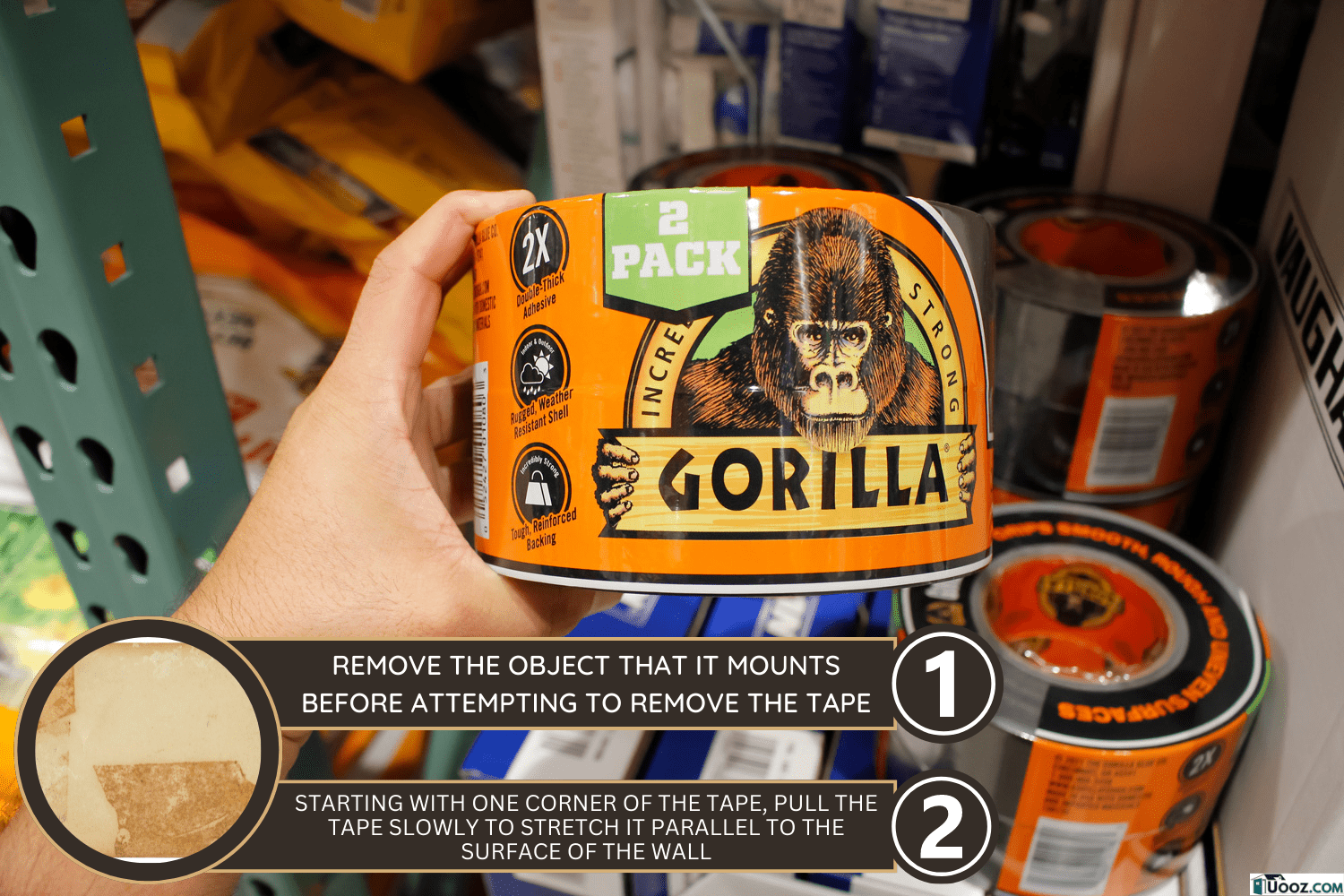
How do tape adhesives work?
Would you believe that the adhesive in tapes relies on a physical reaction to stick to surfaces? The adhesives in tapes are mostly made from acrylics, silicones, and rubbers. A resin is then added to these polymers to improve their stickiness.
The end result is an adhesive that is sensitive to pressure, hence their name—tape adhesives are PSA or pressure-sensitive adhesives.
The adhesives in the tape are solids that can flow like liquids when given enough force. This property allows them to move into the small pores on the surface of materials to create a stronger bond.
Every material—no matter how smooth it may seem—has small, microscopic pores and ridges on its surface.
The pressure that you apply to tapes causes the PSA to behave like a liquid, sliding deep into the pores and ridges of surfaces. Once you release the pressure, the adhesive hardens, locking into the pores and ridges of the surface, creating a powerful grip.
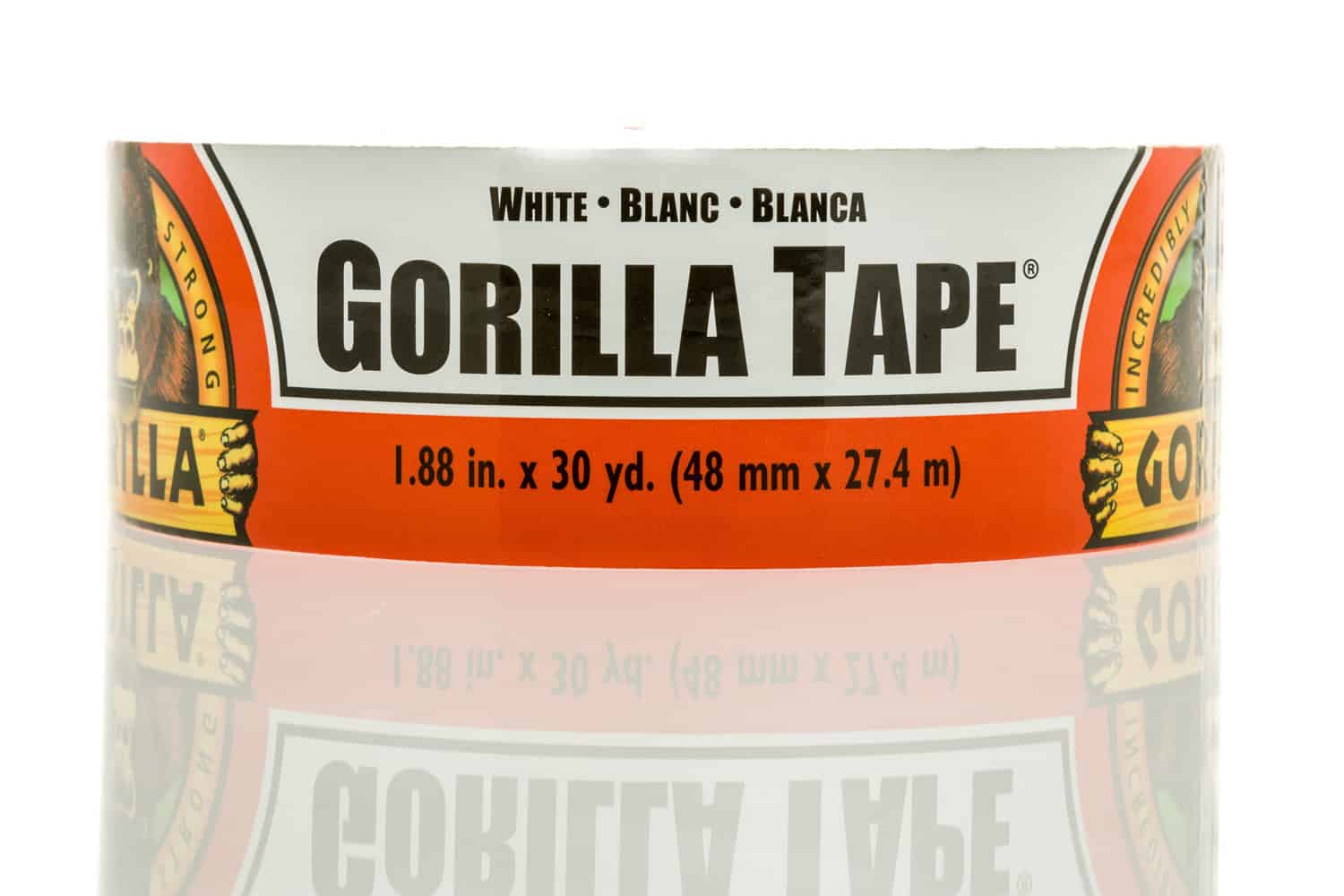
What are Van der Waal’s forces?
These are weak bonds that happen between molecules that have similar charges. Dipole moments in molecules can happen when the protons and electrons of a molecule are not evenly dispersed. These molecules can also create a charge in neutral molecules.
Van der Waal’s forces are vulnerable to distance, quickly vanishing once a great distance is present between molecules. However, despite this, they can enhance the adhesive properties of PSA in tape.
Tape Components
All adhesive tape, regardless of purpose, has four basic components.
Backing
This is the part of the tape that you see. It is also the component that holds the other components together. The backing can be plastic, cloth, or paper. Large rolls of backing go to a machine known in the industry as the “unwinder.”
Primer
During manufacture, a machine spreads a layer of primer on the surface of the backing. At this stage, the backing is a large sheet.
The primer layer is an adhesive primer that helps the adhesive stick more evenly to the backing. It also secures the adhesive to the surface of the backing. This ensures that when you peel your tape from the roll, the adhesive will not stay on the wrong side of the backing.
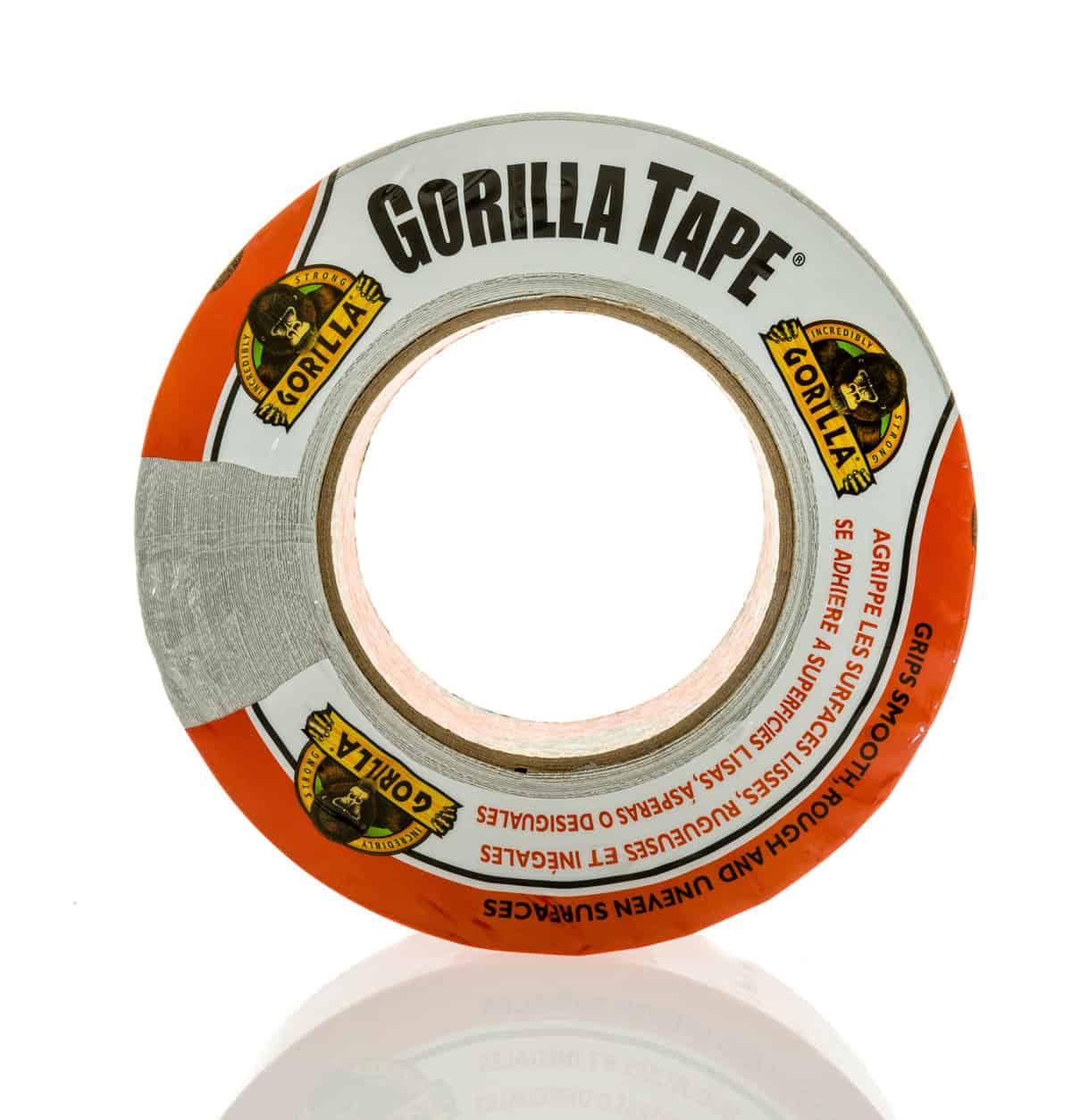
Adhesive
Once the backing has an even primer layer, a thin adhesive layer will be sprayed or spread on the backing sheet. Sensors monitor the thickness of the adhesive layer and relay any inconsistencies to a computer. The computer will adjust the adhesive application to match the tape's requirements.
The adhesive is made from synthetic rubber, which gives it flexibility. A compound is added to give it protection against UV rays. This helps prevent the adhesive from drying out and discoloring.
An antioxidant additive will prevent the adhesive from aging while the tape is in storage. Lastly, synthetic resin additives give the mixture its stickiness.
Release Coating
The release coating is the final layer that is added over the adhesive layer. This thin layer prevents the tape from sticking to itself.
How to remove Gorilla duct tape?
Here are the steps that you can follow to remove Gorilla duct tape.
Removing The Backing Layer
- Get a hairdryer or heat gun and direct the hot air to the surface of the Gorilla duct tape. Do not focus on a single area. Move the heat gun or hairdryer across the surface of the tape to heat up the duct tape evenly.
- Start by peeling off the duct tape from one corner.
- Once you have a good grip, peel the backing towards the opposite corner of the shortest side. It will be easier to peel off the backing once you loosen two corners.
- Peel off the rest of the tape while gripping the two corners. Take note not to crumple the backing into itself after you remove it from the surface. You will use it for the next phase.
Removing The Residue
Removing the residue can damage the surface. Any of these methods should be first tested on an area to observe for any unintentional damage resulting. Use a method that doesn’t cause damage to the surface or the one that causes the least amount of damage.
Blotting
- Use the backing that you have to blot the residue. To blot the adhesive residue, stick a small part of the backing on the residue and peel it off once more. Some of the residues will go with the backing after you peel it off.
- Keep repeating this procedure until you remove as much as you can with the backing. Blotting will allow you to remove most of the large chunks of adhesive from the surface. Be careful with blotting because it can also peel off paint or pieces of wood.
Mineral Spirits Or Citrus Cleaner
- Blotting might not work on some surfaces. If this is the case, dip a clean cloth in mineral spirits or citrus cleaner and apply directly on the surface with residue. Apply as much as you can on the surface. Check the surface for any reaction to the mineral spirits or citrus cleaner. If you see signs of discoloration, stop applying.
- Let the residue absorb as much mineral spirit or citrus cleaner and soak it for a few minutes.
- Wipe away any loose residue with a clean cloth.
- Keep applying as necessary.
Gamblin Gamsol Odorless Mineral Spirits is available on Amazon through this link.
Rubbing Alcohol Or Car Wax Remover
- If mineral spirits and citrus cleaner doesn’t work, try rubbing alcohol or car wax remover. Dip a clean piece of cloth in rubbing alcohol or car wax remover and apply directly to the residue.
- Once again, let the residue absorb as much rubbing alcohol or car wax remover as it can, then let it soak for a few minutes.
- Wipe away the residue with a clean cloth.
- Keep applying alcohol or car wax remover if necessary.
Amazon Brand Solimo 99% Isopropyl Alcohol is available on Amazon through this link.
Commercial Adhesive Remover
Alternatively, you can use a commercial adhesive remover. Follow the instructions on the bottle of the commercial adhesive remover for removing the residue. Commercial adhesive removers are more effective in cool temperatures.
Remember to clean off any excess commercial adhesive remover immediately after removing the residue. This is to prevent the commercial adhesive remover from damaging the finish of the surface.
Goo Gone Original Liquid Adhesive Remover is available on Amazon through this link.
How to remove Gorilla double-sided mounting tape?
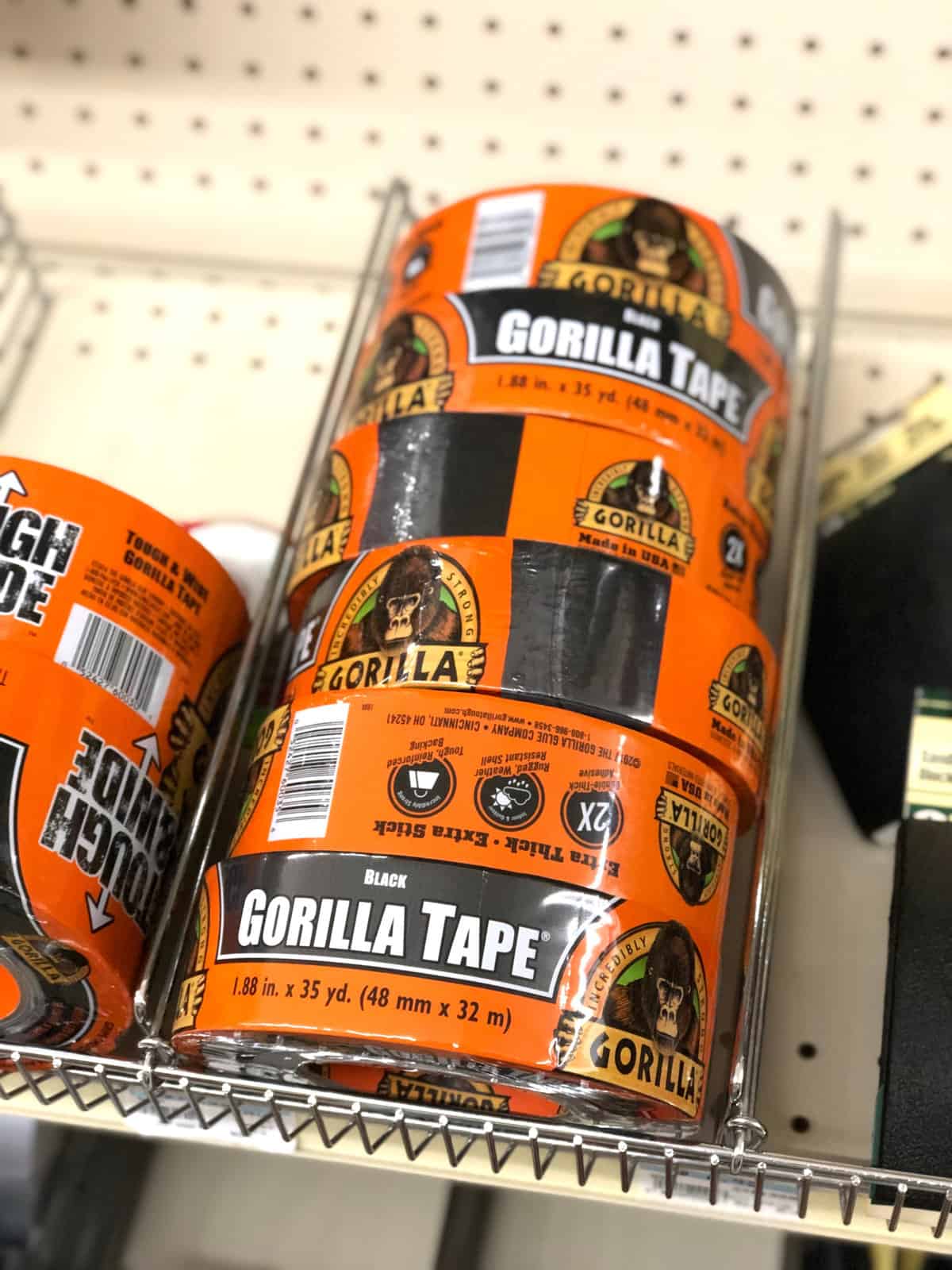
A Gorilla double-sided mounting tape is different from the Gorilla duct tape because it has adhesive on both sides of the backing. Moreover, the backing is made of an elastic material that can stretch.
Removing The Object
- Check the object if it is safe to apply some heat to it. Applying heat to anything that has a glass component is not a good idea because the glass can expand and break from the heat. Moreover, the heat can damage photographs, causing them to crack and fade. Heat can also damage artwork, especially if it is an oil painting.
- If you’re dealing with an object that you cannot use heat on, use a cardboard cutter instead. Slide the cardboard cutter between the wall and the object to slice through the adhesive. If you have a large object, you only need to loosen one side with the cutter.
- Peel the object slowly until you get it out of the mounting tape.
Removing The Mounting Tape Backing
- Use a hairdryer or heat gun to heat up the mounting tape. This is especially important if you are not able to use the hairdryer or heat gun on the object.
- Peel one corner of the mounting tape.
- Once you have a good grip on the backing, pull the tape in a direction that is parallel to the surface where the mounting tape was installed. The mounting tape will stretch and will slowly peel off from the surface of the wall.
Removing The Mounting Tape Residue
Removing the residue from the Gorilla double-sided tape can be done the same way as removing the residue from the Gorilla duct tape. Follow the same steps to remove any adhesive residue from the wall.
Conclusion
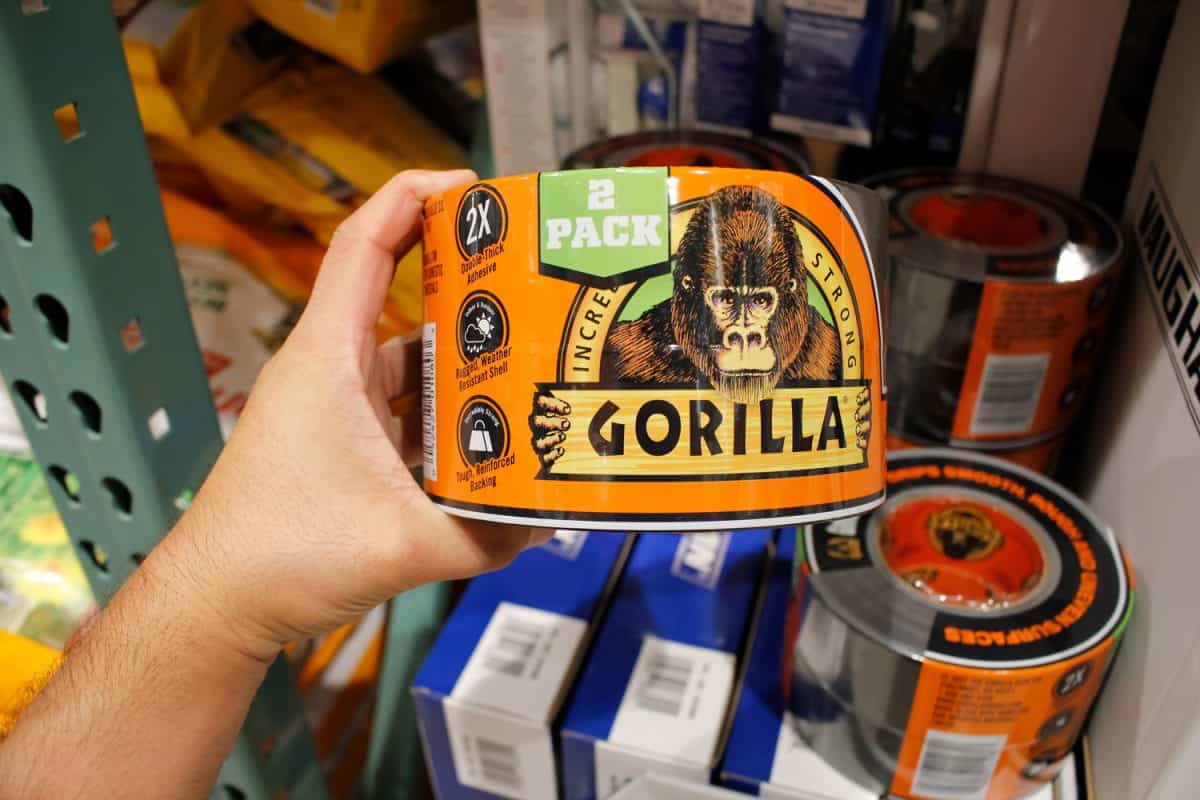
Removing Gorilla tape is possible, although there will be an adhesive residue that you will need to remove separately. Carefully remove the residue to prevent damage to the surface.
If you enjoyed reading this article, you might find the articles below equally enjoyable to read:



